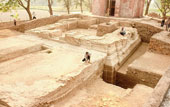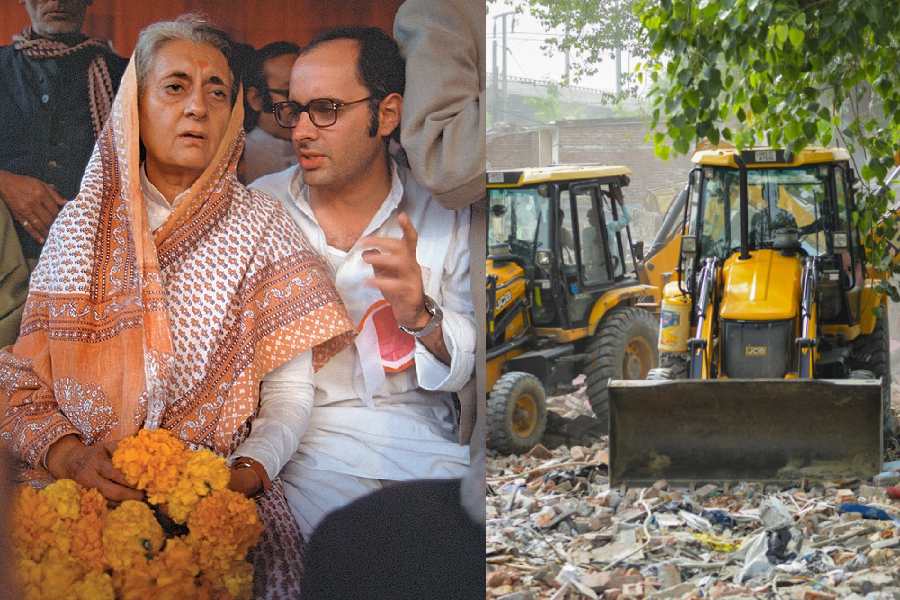 |
 |
 |
 |
| (From Top) 1. The jagamohana of Jatar Deul 2. The shikhara, which was, till now, the only visible portion of the temple3. & 4. Some of the artefacts unearthed from the dig. Picture courtesy ASI |
Recent excavation by the Archaeological Society of India (ASI) has unearthed huge structures adjoining the Jatar Deul temple in the Sunderbans, including a jagamohana and a garbh-griha (sanctum sanctorum) in the style of the Odiya temples.
The discoveries, which are part of the temple, at Raidighi, are significant and could raise its status as a tourist attraction.
“Jatar Deul is one of the oldest terracotta temples from the 11th or 12th century,” said Gautam Sengupta, the director-general of ASI. “But this discovery enhances its status as a rare instance of the North Indian Nagara style of architecture, the only one in lower Bengal.”
“That such a huge brick structure has survived in these geographical and climatic conditions is a remarkable technological feat,” Sengupta told Metro from Delhi.
While modern architects and engineers combating floods, salinity and erosion in the Sunderbans can take tips from their 11th or 12th century counterparts, the current discovery has the potential to up the tourist quotient of South 24-Parganas. A bigger temple complex means bigger business, especially when the original structure is already a religious place and MP Satabdi Roy and minister of state for information and broadcasting C.M. Jatua are pulling out all the stops to speed up development.
The historical significance of the findings is also substantial, according to experts. “The discoveries point to the fact that this may have been an important pilgrimage in the Sena period (11th-12th centuries),” said Tapanjyoti Baidya, the superintendent of archaeology, ASI, Calcutta circle, who is leading the scientific clearance of the complex. “Even today, during Shivratri, 2,50,000 people assemble in the vicinity and there is a tradition of horse-racing that begins from and ends at the front of the temple. When we have uncovered the adjoining structures, finished conservation and landscaping, this place could be a major attraction.”
Baidya said special requests to hasten excavation had come from Roy and Jatua, who had made large grants from their MPLAD funds for the development of roads and transport. “We are using our own funds, of course, but this encouragement is always welcome,” he said.
The shikhara of Jatar Deul has been visible for many centuries, standing atop a mound surrounded by tall trees and paddy fields, 80km from Calcutta. It was one of the few historical monuments in the Sunderbans, the only one protected by the ASI.
Moulded bricks with geometric and floral patterns, a terracotta Shivling, clay lamps, shards of red and grey pottery, bits of ceramics, decorative ivory, a stone water channel and a stone door jamb decorated with elephant and floral motifs are some of the findings so far by the excavation team.
The jagamohana or mandapa is more or less square, covering an area of roughly 160 square metres, a brick staircase, a foundation trench and a workshop for mixing lime.
“The way the foundation and walls have been constructed is interesting.” Baidya said. “Successive walls and floors have been buffered with broken bricks, loose earth, lime, sticky clay mortar, bits of stone. A covering of decorative stucco was used to combat salinity, damp and the rising waters of the nearby River Moni in the monsoons.”










